I chose the name because these beauties can be found at the bases of its boulders:
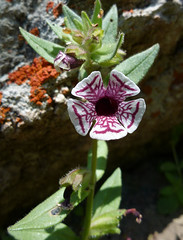
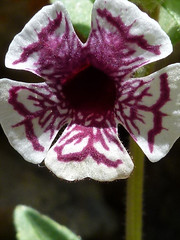
Calico Monkeyflowers, Mimulus pictus - a rare, endemic species
of the southern Sierra Nevada and northern Tehachapis
In April, while visiting to do a little photo-worshiping of these CNPS List 1B.2 funky monkeys, I noticed, without surprise, that above the spring is an animal track leading down to it.
I.e., a good spot for a cam trap.
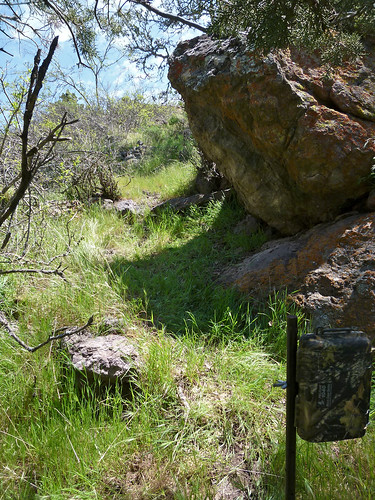
Path between trees and boulders down to calico spring
The set caught our first Tehachapi coyote. We've known they're around - we see and hear them. But, we hadn't yet gotten them on the cams. Guessing that means the locals have some well-established wariness of humans - perhaps from past hunting and trapping.
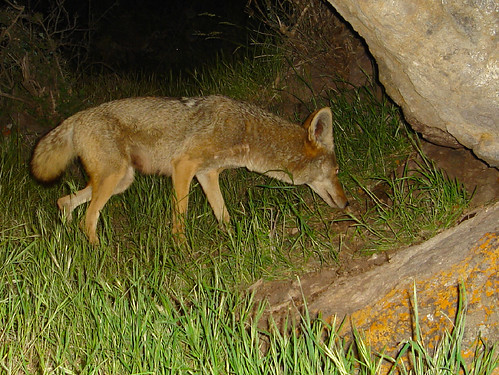
Coyote smelling its way into the scene
A bobcat also came down the path and stopped for a good whiff.
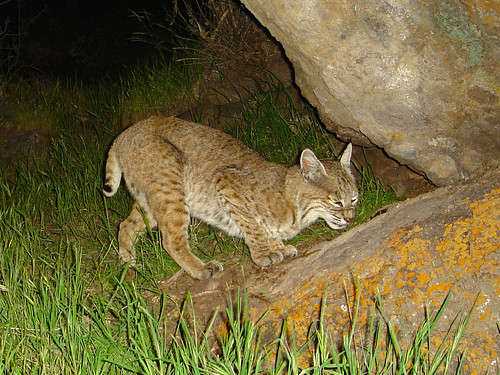
Bobcat sniffing the scent mark
And several woodrats, Neotoma macrotis, scurried the boulders. Based on size, tails and fur color, I think there's 3 individuals, maybe 4, in these four pics. Although, I would add that the last one looks a little desert woodrat-ish to me too, and may very well be.
They're also likely what the 'yote and bob were hunting.
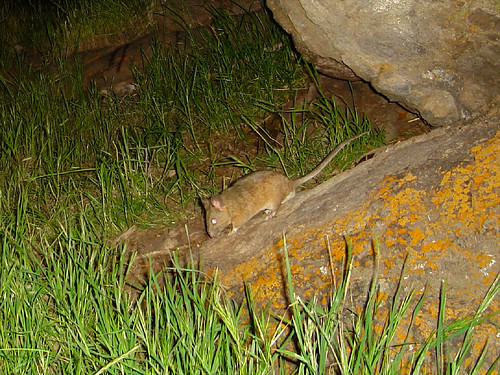
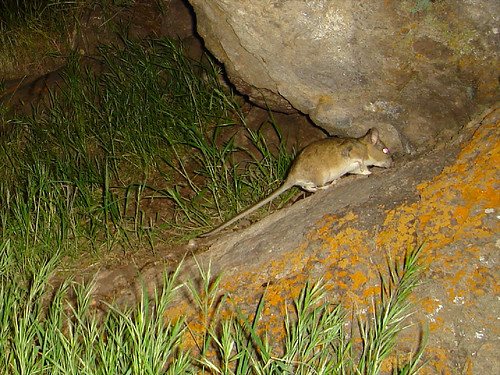
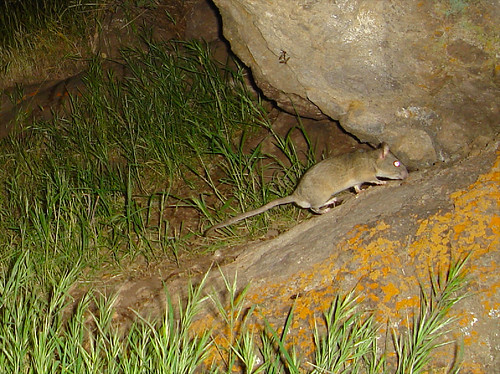
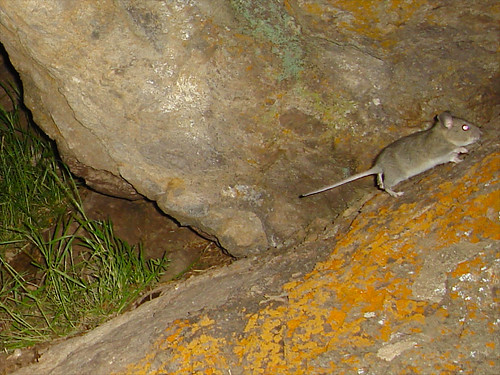
If the seep water flows into summer, we may have to try this spot again.
Plus, it'll give me an excuse to see if any other beauts are hiding amoung the boulders.
:)
====
References:
- calflora.org - Mimulus pictus
- California Native Plant Society (CNPS) - CNPS rare plant ranking system
- IUCN - Big-eared woodrat range map
- The Nature of a Man (this blog) - posts on cam trapping the Tehachapis

beautiful flowers is right. your coyote seems small and shy. ours here are big and bold. dammit...
ReplyDelete